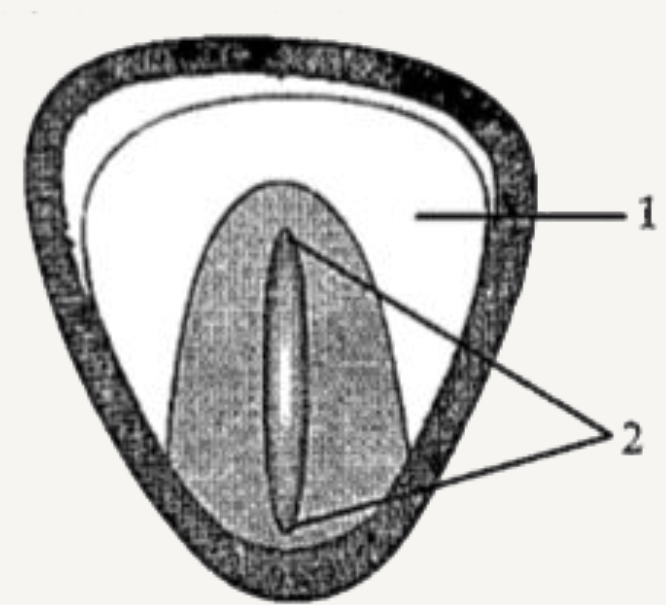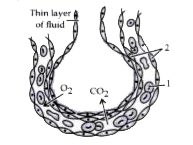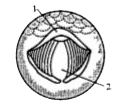Read the passage given below carefully and answer the questions that follow:
"All living documents evolve in this manner through debates , arguments , competition and practical politics. Since 1973, the court has, in many cases, elaborated upon this theory of basic structure and given instances of what constitutes the basic structure of the Constitution of India. In a sense , the basic structure doctrine has further Consolidated the balance between rigidity and flexibility: by saying that certain parts cannot be amended , it has underlined the rigid nature while by allowing amendments to all others it has underlined the flexible nature of the amending process ."
Keshavanand ruling has contributed to the evolution of the Constitution in the different ways . Explain.
Kesavananda ruling has contributed to the evolution of the Constitution in the different ways:
* It has set specific limits to the Parliament.s power to amend the Constitution. It says that no amendment can violate the basis structure of the Constitution.
* It allows the Parliament to amend any and all parts of the Constitution ( within this limitation).
* It places the Judiciary as the final authority in deciding if an amendment violates basic structure and what constitutes the basic structure .
Topper's Solved these Questions
- CONSTITUTION AS A LIVING DOCUMENT BOOK - FULL MARKSCHAPTER - CONSTITUTION AS A LIVING DOCUMENT EXERCISE - ADDITIONAL QUESTIONS WITH ANSWERS (V. Long Answer Type Questions -II)
3 Videos
- CONSTITUTION AS A LIVING DOCUMENT BOOK - FULL MARKSCHAPTER - CONSTITUTION AS A LIVING DOCUMENT EXERCISE - ADDITIONAL QUESTIONS WITH ANSWERS (III. Short Answer Type Questions )
4 Videos
- CONSTITUTION : WHY AND HOW ? BOOK - FULL MARKSCHAPTER - CONSTITUTION : WHY AND HOW ? EXERCISE - ADDITIONAL QUESTIONS WITH ANSWERS (VI. PICTURE_BASED QUESTIONS)
1 Videos
- DEVELOPMENTBOOK - FULL MARKSCHAPTER - DEVELOPMENTEXERCISE - RESOURCE MATERIAL (II. LONG ANSWER TYPE QUESTIONS)
2 Videos
Similar Questions
Read the passage given below carefully and answer the questions that follow:
"All living documents evolve in this manner through debates , arguments , competition and practical politics. Since 1973, the court has, in many cases, elaborated upon this theory of basic structure and given instances of what constitutes the basic structure of the Constitution of India. In a sense , the basic structure doctrine has further Consolidated the balance between rigidity and flexibility: by saying that certain parts cannot be amended , it has underlined the rigid nature while by allowing amendments to all others it has underlined the flexible nature of the amending process ."
The theory of basic structure is itself an example of a living Constitution. Comment.
View SolutionHow the basic structure of the construction of India has been maintained till date?
View Solution
Knowledge Check
The basic structure of the cell membrane
Ais a lipid bilayer that serves as a barries to water - soluble molecules.Bis a lipid bilayer that serves as a barries to lipid - soluble molecules.Cis best described as lipids dispersed within a protein bilayer.Dis a protein bilayer that serves as a barrier to lipid- soluble molecules.Which among the following is not a basic feature of the Constitution of India ?
AFundamental rightsBIndependent of judiciaryCFederalismDThe unquestioned right of the Parliament to amend any part of the ConstitionThe Supreme Court of India enunciated the Doctrine of Basic Structure of the Constitution of India in
AShankari Prasad CaseBSajjan Singh CaseCGolaknath CaseDKesavananda Bharati Case
The basic structure of the cell membrane
View SolutionStudy the diagram given below and answer the questions that follow:

Write the basic function of this structure.
View SolutionStudy the diagram given below and answer the questions that follow :

Write the basic function of this structure.
View SolutionStudy the diagram given below and answer the questions that follow :
Write the basic function of this structure.
View SolutionStudy the diagram given below and answer the questions that follow:

Write the basic function of this structure.
View Solution
